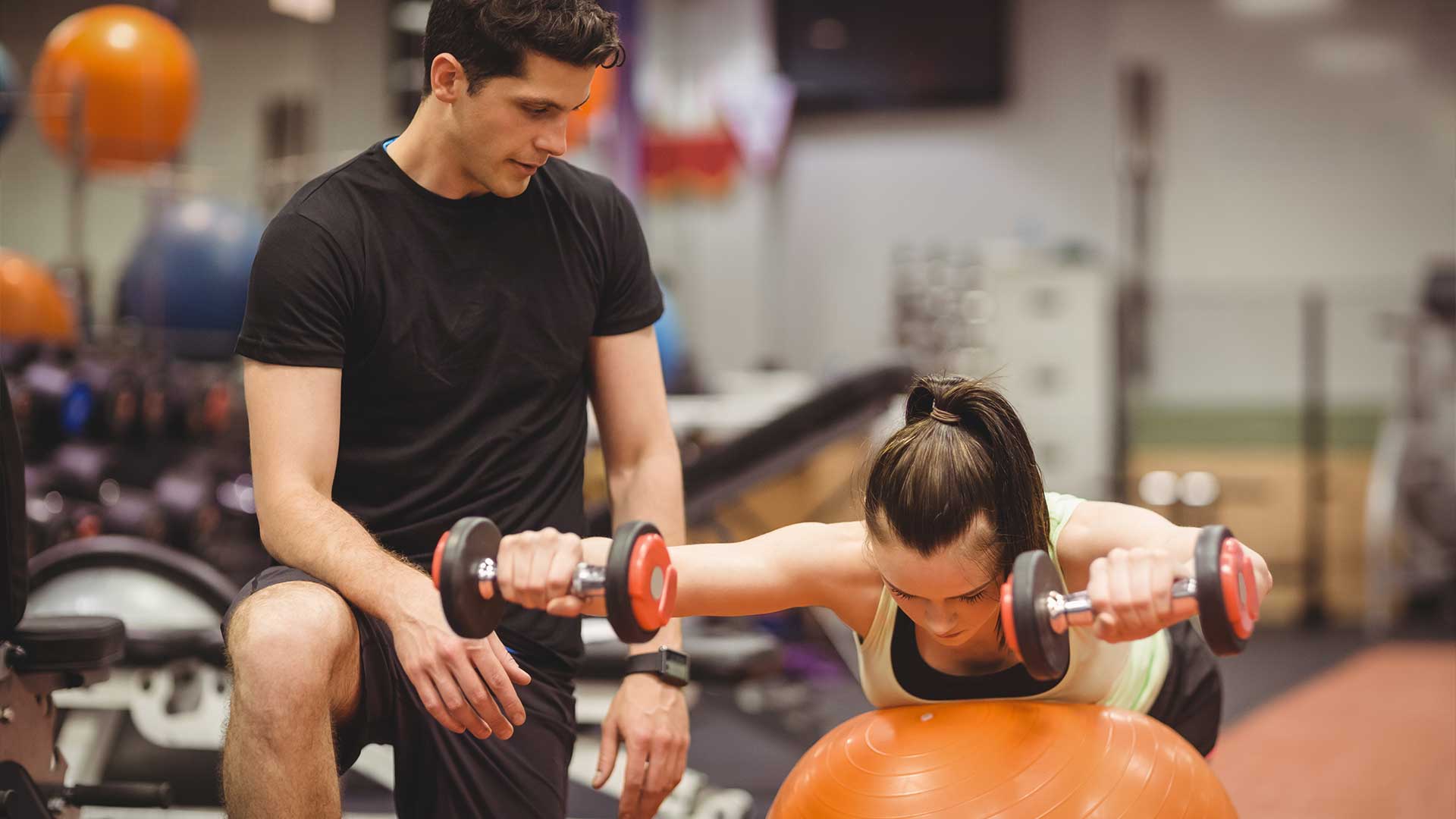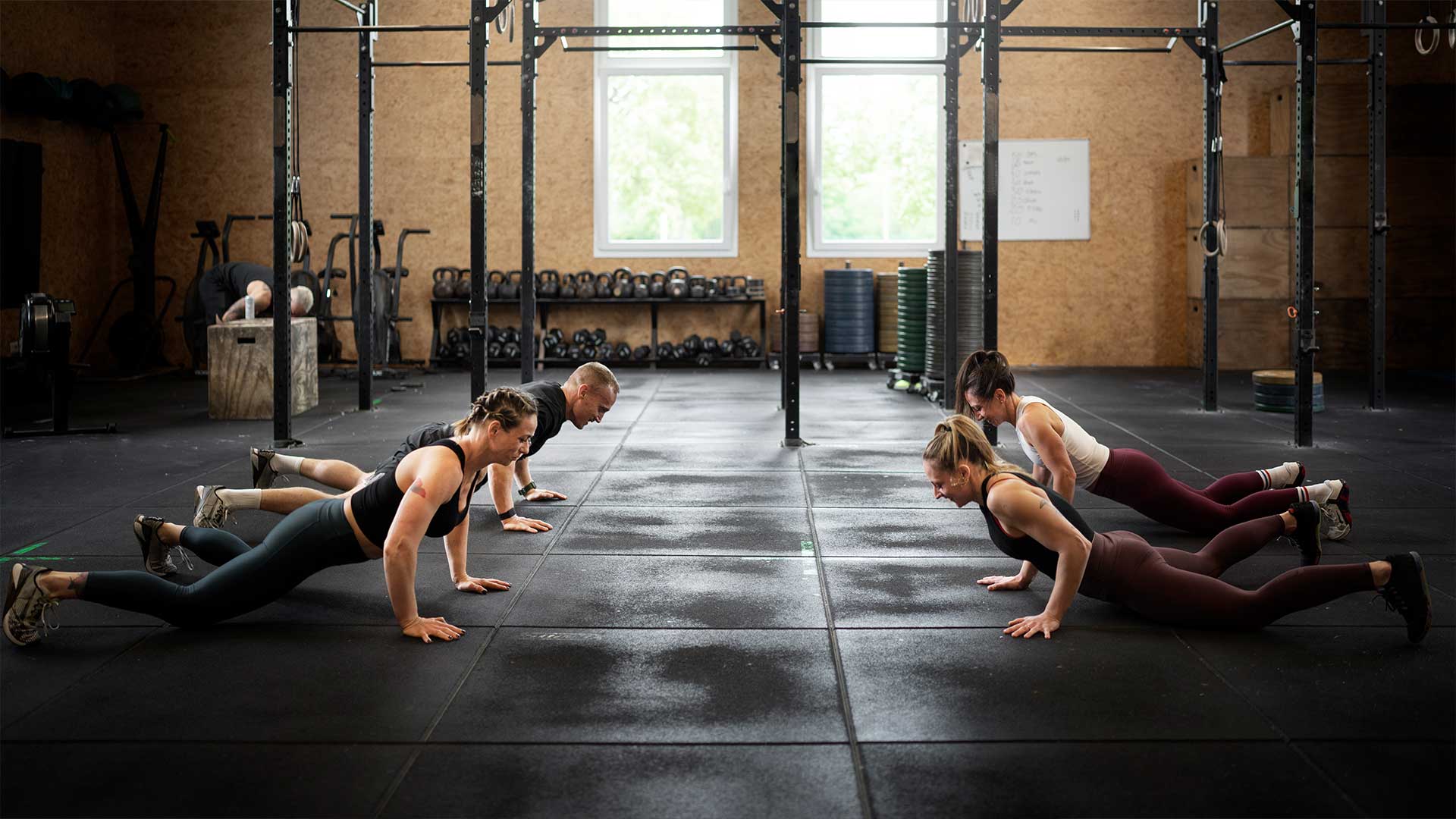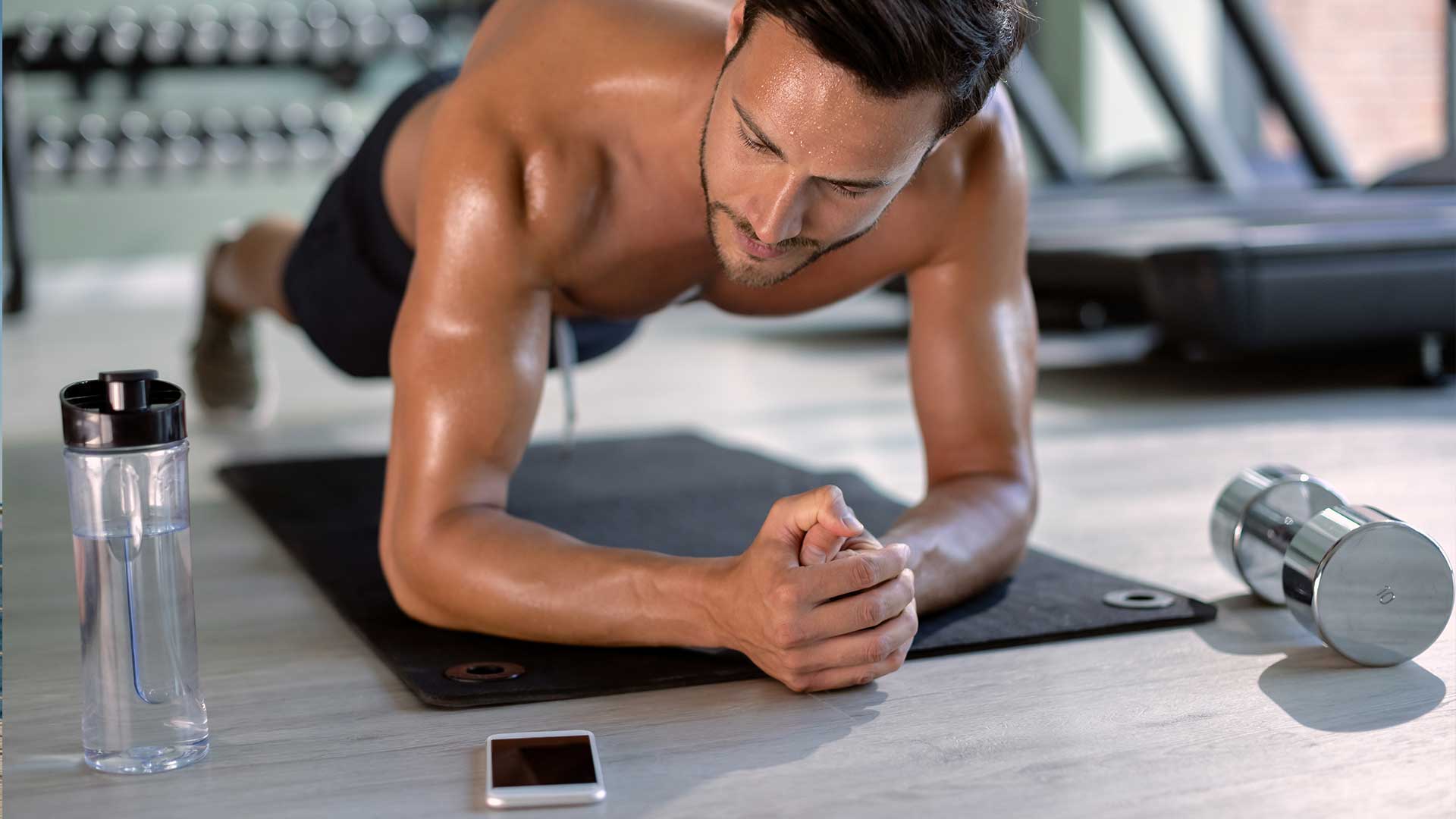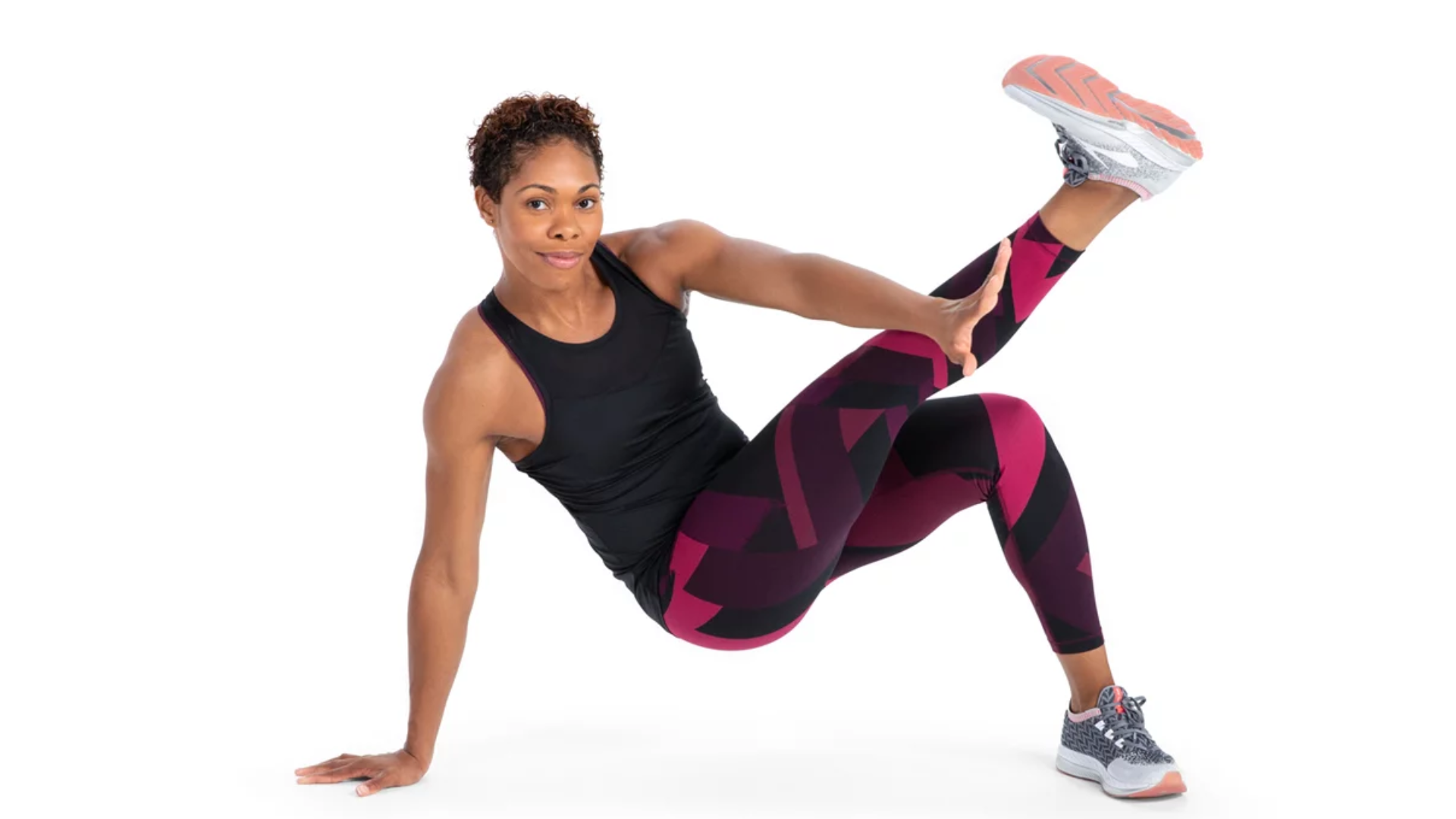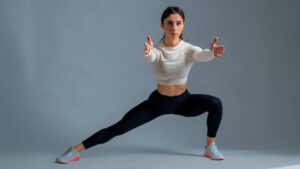The Benefits of Plank Exercises for Fitness
If you’re looking for a simple yet effective way to strengthen your core and improve your overall fitness, look no further than plank exercises. Planks are a popular exercise that work the entire body, and they are easy to do anywhere, anytime. In this article, we will discuss the science behind plank exercises, the top 5 plank exercises for fitness, tips for proper form and technique, how to incorporate plank exercises into your fitness routine, and plank challenges and workouts to keep you motivated.
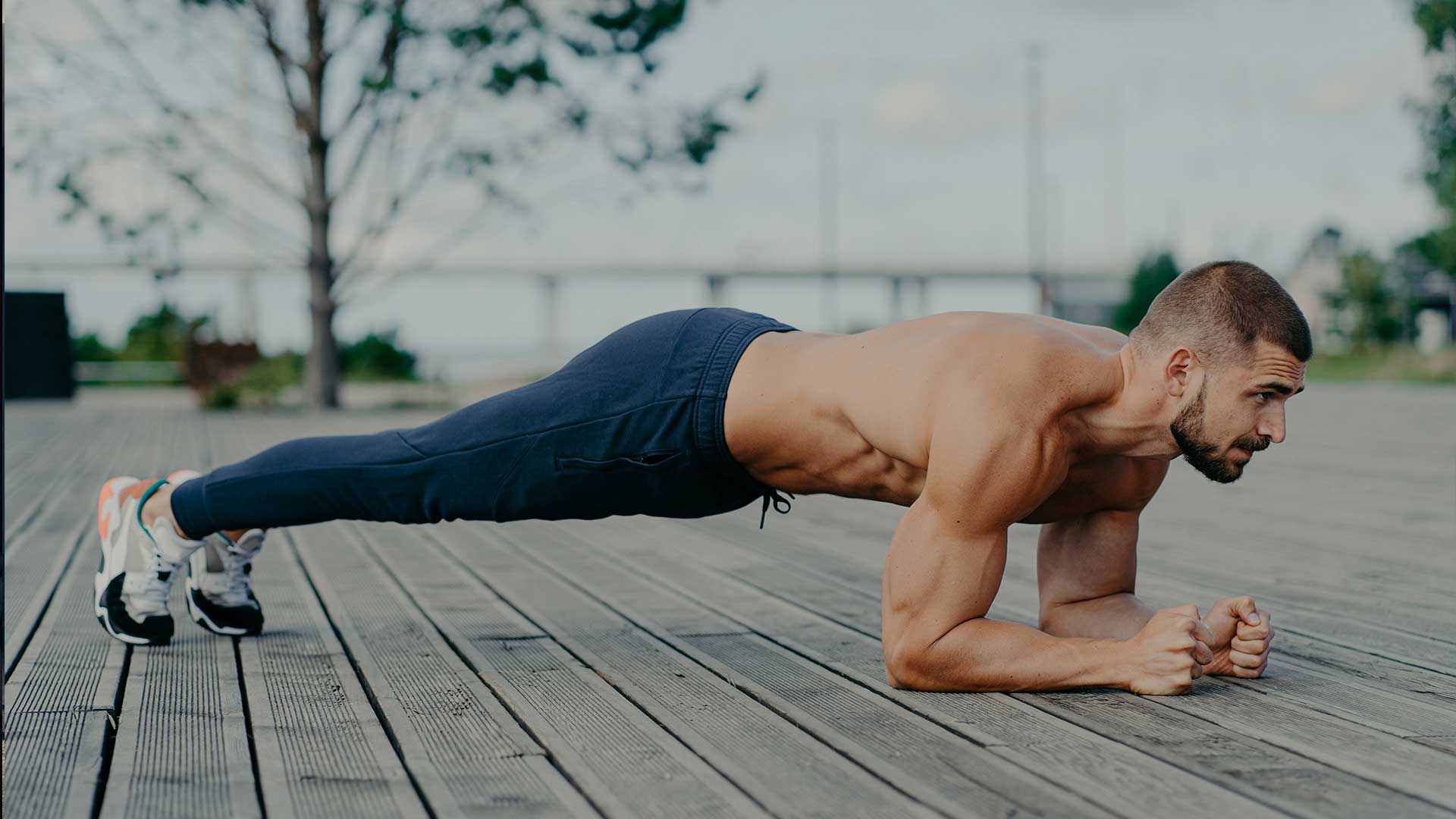
Planks are a versatile exercise that can help you achieve your fitness goals in a number of ways. Strong Workouts brings you just a few of the benefits of performing plank exercises:
- Strengthens your core muscles: Planks target the abdominal muscles, back muscles, and hip muscles, all of which are important for maintaining good posture and preventing back pain.
- Improves balance and stability: Planks require a strong core to maintain balance, which can improve overall stability and reduce the risk of falls.
- Boosts metabolism and burns calories: Planks engage multiple muscle groups at once, which can lead to a higher calorie burn and increased metabolism.
- Reduces the risk of injury: Planks can help improve flexibility and range of motion, reducing the risk of injury during other exercises or daily activities.
Now that we’ve discussed some of the benefits of planks, let’s dive into the science behind how they work.
The Science Behind Plank Exercises for Fitness
Plank exercises are effective because they work multiple muscle groups at once. When you perform a plank, you engage your core, glutes, back, and shoulder muscles. According to Verywell Fit, plank exercises activate a variety of muscle groups throughout the body, including Rectus Abdominis, Obliques, Transverse Abdominis, Erector Spinae, Gluteus Maximus, and shoulder muscles.
Muscle Activation
The muscle groups activated during plank exercises include:
- Rectus Abdominis: This muscle forms the “six-pack” and is responsible for flexing the spine forward.
- Obliques: These muscles run along the sides of the abdomen and are responsible for rotating the trunk.
- Transverse Abdominis: This muscle is located deep within the abdomen and stabilises the spine and pelvis.
- Erector Spinae: This muscle group runs along the spine and extends the back.
- Gluteus Maximus: This is the largest muscle in the buttocks and is responsible for hip extension.
- Shoulder muscles: Planks require you to hold yourself up using your forearms or hands, which engages the shoulder muscles, according to Shape Magazine.
Benefits of Plank Exercises
In addition to working multiple muscle groups at once, plank exercises offer a number of benefits for overall fitness and health. According to Health, some of these benefits include:
- Improved posture: Planks help improve core strength and stability, which can improve posture and reduce the risk of back pain.
- Better balance and stability: Planks require you to maintain a stable position, which can improve balance and reduce the risk of falls.
- Reduced risk of injury: Planks can help improve flexibility and range of motion, reducing the risk of injury during other exercises or daily activities.
- Increased calorie burn: Planks engage multiple muscle groups at once, which can lead to a higher calorie burn and increased metabolism.
The Top 5 Plank Exercises for Fitness
Plank exercises are a great way to strengthen your core and improve overall fitness, but with so many variations, it can be challenging to know where to start. Here are the top 5 plank exercises for fitness that you can incorporate into your workout routine:
1. Forearm Plank
The forearm plank is a classic exercise that targets the entire core, including the rectus abdominis, transverse abdominis, and obliques. To perform a forearm plank:
- Start in a push-up position with your forearms resting on the ground.
- Keep your shoulders directly over your elbows and engage your core.
- Hold the position for up to 1 minute or as long as possible.
2. Side Plank
The side plank is a great exercise for targeting the obliques and improving balance and stability. To perform a side plank:
- Start in a forearm plank position.
- Rotate your body to one side and stack your feet on each other.
- Lift your top arm towards the ceiling and hold the position for up to 1 minute or as long as possible.
- Repeat on the other side.
3. Plank Jacks
Plank jacks are a dynamic exercise that targets the core, glutes, and legs. To perform plank jacks:
- Start in a forearm plank position.
- Jump your legs out wide and then back together.
- Keep your core engaged and maintain proper form throughout the exercise.
- Repeat for 30-60 seconds.
4. Spiderman Plank
The spiderman plank is a challenging exercise that targets the obliques, hip flexors, and shoulders. To perform a spiderman plank:
- Start in a forearm plank position.
- Bring your right knee towards your right elbow, keeping your foot off the ground.
- Return to the starting position and repeat on the other side.
- Alternate sides for 30-60 seconds.
5. Plank with Leg Lift
The plank with leg lift is a great exercise for targeting the glutes and hamstrings. To perform a plank with leg lift:
- Start in a forearm plank position.
- Lift one leg off the ground and hold the position for up to 1 minute or as long as possible.
- Repeat on the other leg.
Incorporating these top 5 plank exercises into your fitness routine can help you achieve a stronger, more stable core and improve overall fitness.
How to Incorporate Plank Exercises into Your Fitness Routine
Plank exercises are a versatile and effective way to improve your fitness routine. Here are some tips for incorporating plank exercises into your workouts:
1. Start Slowly
If you’re new to plank exercises, start slowly and gradually increase the intensity and duration of your workouts. Begin with basic plank exercises like the forearm plank and gradually work up to more challenging variations.
2. Mix It Up
To keep your workouts fresh and challenging, mix up your plank exercises with other core exercises like crunches, sit-ups, and leg raises. You can also incorporate planks into circuit training or HIIT workouts for an added challenge.
3. Maintain Proper Form
Proper form is essential for getting the most out of your plank exercises and avoiding injury. Keep your body straight from head to heels, engage your core, and avoid arching your back or letting your hips sag.
4. Add Weight
For an added challenge, incorporate weight into your plank exercises. You can use a weight plate, medicine ball, or resistance bands to add resistance and increase the difficulty of your workouts.
5. Track Your Progress
Tracking your progress is a great way to stay motivated and see your improvement over time. Keep track of the duration and intensity of your plank exercises, and aim to increase the difficulty and duration of your workouts as you progress.
By incorporating plank exercises into your fitness routine and following these tips, you can improve your core strength, stability, and overall fitness.
Precautions and Modifications for Planks
While plank exercises are generally safe and effective for most people, there are some precautions and modifications you should keep in mind to avoid injury and get the most out of your workouts.
1. Avoid Planks if You Have Shoulder Injuries
Plank exercises require you to support your body weight with your arms and shoulders, which can be challenging for those with shoulder injuries. If you have a shoulder injury, it’s best to avoid plank exercises or modify them to avoid aggravating your condition.
2. Modify Planks During Pregnancy
While plank exercises can be safe and effective during pregnancy, it’s important to modify them to avoid putting excess strain on your body. You can modify plank exercises during pregnancy by performing them on your knees or by placing your hands on an elevated surface to reduce the angle of your body.
3. Consult a Healthcare Provider if You Have Lower Back Pain
Plank exercises can be challenging for those with lower back pain, but they can also be an effective way to strengthen the core and reduce the risk of future pain. If you have lower back pain, it’s important to consult a healthcare provider before starting a plank exercise routine to determine if it’s safe for you.
4. Modify Planks for Beginners
If you’re new to planks, it’s important to start slowly and gradually increasing the intensity and duration of your workouts. You can modify plank exercises for beginners by performing them on your knees or holding them for shorter durations.
5. Listen to Your Body
As with any exercise routine, it’s important to listen to your body and avoid pushing yourself too hard. If you experience pain or discomfort during plank exercises, stop immediately and consult a healthcare provider.
By following these precautions and modifications, you can safely and effectively incorporate planks into your fitness routine and improve your overall health and wellness.
How Plank Exercises Benefit Your Fitness
Plank exercises offer a wide range of benefits for your fitness, including improved core strength, stability, and balance. Here are some of the top benefits of incorporating planks into your fitness routine:
1. Improved Core Strength
Plank exercises are one of the best ways to strengthen your core muscles, including the rectus abdominis, transverse abdominis, and obliques. By improving core strength, you can improve your posture and reduce the risk of injury during other exercises and daily activities.
2. Increased Stability and Balance
Plank exercises require you to maintain a stable position, which can help improve your balance and stability. This can benefit athletes and older adults at risk for falls or other balance-related injuries.
3. Better Posture
By improving core strength and stability, plank exercises can also help improve your posture. Good posture can help reduce the risk of back pain and other injuries and improve your overall appearance and confidence.
4. Increased Calorie Burn
While plank exercises may not seem like a high-intensity workout, they can actually burn a significant number of calories. Plank exercises engage multiple muscle groups, which can help increase your metabolic rate and burn more calories throughout the day.
5. Reduced Risk of Injury
By improving core strength, stability, and balance, plank exercises can help reduce the risk of injury during other exercises and daily activities. Strong core muscles can also help protect your spine and reduce the risk of lower back pain.
Incorporating plank exercises into your fitness routine can offer a wide range of benefits for your health and wellness. By improving core strength, stability, and balance, you can improve your overall fitness and reduce the risk of injury.
Start Incorporating Planks into Your Fitness Routine Today
Plank exercises are a versatile and effective way to improve your fitness and overall health. By incorporating plank exercises into your fitness routine, you can improve your core strength, stability, balance, posture, and calorie burn. Here are some final tips for getting started:
1. Start with Basic Planks
If you’re new to plank exercises, start with basic exercises like the forearm plank and gradually work up to more challenging variations. Remember to maintain proper form and avoid pushing yourself too hard.
2. Mix Up Your Workouts
To keep your workouts fresh and challenging, mix up your plank exercises with other core exercises like crunches, sit-ups, and leg raises. You can also incorporate plank exercises into circuit training or HIIT workouts for an added challenge.
3. Listen to Your Body
As with any exercise routine, it’s important to listen to your body and avoid pushing yourself too hard. If you experience pain or discomfort during plank exercises, stop immediately and consult a healthcare provider.
4. Check Out Our Other Great Content
If you enjoyed this article on plank exercises, be sure to check out our other great content on fitness, nutrition, and wellness. We offer many articles, tips, and resources to help you achieve your health and fitness goals.
Incorporating plank exercises into your fitness routine can be a challenging but rewarding experience. By following these tips and listening to your body, you can improve your overall fitness and achieve your health goals.
Common Questions
Who can benefit from doing planks for fitness?
Anyone can benefit from doing plank exercises, regardless of fitness level or age.
What is the proper form for a plank exercise?
To perform a plank exercise, start in a face-down position with your forearms and toes on the floor, engage your abdominal muscles, and hold the position for increasing amounts of time.
How long should I hold a plank?
It’s recommended to hold a plank exercise for 30-60 seconds, gradually increasing the duration as you become more comfortable with the exercise.
What are some common modifications for planks?
Common modifications for plank exercises include performing them on your knees, placing your hands on an elevated surface, or reducing the exercise duration.
How do plank exercises benefit your fitness?
Plank exercises can improve core strength, stability, balance, posture, and calorie burn, making them a versatile and effective exercise for overall fitness.
What if I have lower back pain? Can I still do planks?
If you have lower back pain, it’s important to consult a healthcare provider before starting a plank exercise routine to determine if it’s safe for you or if modifications are necessary.

